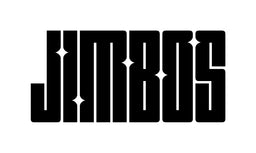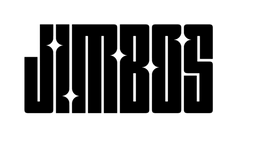RV Roof Cleaning 101: Rubber, Fiberglass, and Painted Roofs
Your RV roof is one of the most critical — and most neglected — parts of your rig. It’s constantly exposed to sun, rain, dirt, and debris, all of which can cause cracking, fading, or leaks if not maintained. Whether your RV has a rubber, fiberglass, or painted roof, this guide shows you how to safely clean and protect it for years of trouble-free travel.
Estimated Reading Time: ~12 minutes
Why Cleaning Your RV Roof Matters
Your roof is your RV’s first line of defense against water intrusion and UV damage. Neglecting it leads to oxidation, cracked seals, and premature membrane wear — all of which can result in costly leaks and repairs. Regular roof maintenance keeps your RV watertight, extends its lifespan, and prevents mold or mildew buildup.
Types of RV Roofs and How to Identify Yours
Before cleaning, identify your roof material — this determines which products and techniques to use:
- Rubber (EPDM or TPO): Flexible, slightly textured, and often white. Found on most modern RVs.
- Fiberglass: Smooth, glossy finish similar to car paint. Common on higher-end Class A motorhomes.
- Painted Metal or Aluminum: Found on older or custom RVs; typically has a clearcoat layer.
What You’ll Need for RV Roof Cleaning
- → Pure Magic Cleaner (for removing oxidation, mold, and grime)
- → The Super Soaper (for gentle pre-wash and foaming)
- → Soft-bristle brush or microfiber wash mop
- → Massive Drying Towel
- → Tough As Shell Ceramic Spray (for long-term roof protection)
- → Ladder and safety gear (non-slip shoes, gloves, hose with sprayer)
Step-by-Step: How to Clean Your RV Roof Safely
Step 1 – Rinse Off Loose Dirt and Debris
Start by rinsing the roof with low pressure to remove dust, leaves, and loose buildup. Avoid directing high-pressure water at roof seams or vents to prevent damage.
Step 2 – Pre-Soak with The Super Soaper
Mix The Super Soaper in a foam cannon or pump sprayer (2–4 oz per gallon of water) and apply it evenly. Let it dwell for 3–5 minutes to break down grime and loosen contaminants.
Step 3 – Scrub with a Soft Brush
Use a long-handle brush or microfiber mop to gently agitate the surface. Work in small sections and reapply soap if it begins to dry, especially on hot days.
Step 4 – Treat Stains with Pure Magic Cleaner
For stubborn black streaks, mildew, or oxidation, spray Pure Magic Cleaner directly onto the area. Let it dwell 1–2 minutes, then gently scrub and rinse thoroughly.
Step 5 – Rinse and Dry
Rinse the entire roof with clean water, ensuring all soap residue is removed. Dry with the Massive Drying Towel or allow it to air dry completely before applying protection.
Step 6 – Protect with Tough As Shell Ceramic Spray
Once dry, apply Tough As Shell Ceramic Spray evenly across the roof. It creates a UV-resistant, hydrophobic layer that prevents dirt buildup and oxidation. Wipe with a microfiber towel until the surface feels slick and glossy.
Best Roof Cleaner: Pure Magic Cleaner
Pure Magic Cleaner removes mold, oxidation, and black streaks fast — safe for rubber, fiberglass, and painted RV roofs.
Buy on Jimbo’s Detailing Buy on AmazonRV Roof Material Comparison Chart
| Roof Type | Durability | Maintenance Level | Recommended Product |
|---|---|---|---|
| Rubber (EPDM/TPO) | High Flexibility, Moderate UV Resistance | Clean every 3 months | Pure Magic Cleaner + Tough As Shell |
| Fiberglass | High Gloss, Long-Lasting | Clean every 4–6 months | Picture Perfect Polish + Tough As Shell |
| Painted Metal | Durable, Scratch-Resistant | Clean every 6 months | The Super Soaper + Tough As Shell |
Pro Tips for RV Roof Cleaning
- → Avoid harsh solvents or bleach on rubber roofs — they cause drying and cracking.
- → Always rinse sides of your RV after cleaning the roof to prevent runoff streaks.
- → Apply protection every 3–6 months depending on exposure.
- → Inspect seams and caulking each cleaning — reseal if needed to prevent leaks.
- → Don’t walk directly on unsupported roof sections — use plywood or a knee board for weight distribution.
Protect Your Roof with Tough As Shell
Tough As Shell Ceramic Spray adds a UV-resistant, hydrophobic coating to your RV roof, reducing oxidation and grime buildup.
Buy on Jimbo’s Detailing Buy on AmazonHow Often Should You Clean Your RV Roof?
As a rule of thumb, clean your RV roof every 3–6 months — more often if you park under trees, near the coast, or in dusty areas. Keeping it clean prevents oxidation and black streaks from running down your RV’s sides after rain.
Long-Term Roof Maintenance Schedule
- 🕓 Every 3 Months: Clean with The Super Soaper and treat stains with Pure Magic Cleaner.
- 🕓 Every 6 Months: Apply Tough As Shell Ceramic Spray to maintain UV protection.
- 🕓 Once a Year: Inspect and reseal roof joints or vents as needed.
Related Reading
- How to Clean an Oxidized RV Exterior Back to a Glossy Finish
- How to Foam Wash an RV Using The Super Soaper
- How to Prevent Water Spots When Washing in the Sun
- Should You Ceramic Coat Your RV? (Pros, Cons, and Cost)
- The Ultimate Guide to RV Detailing
FAQs
What’s the best cleaner for a rubber RV roof?
Pure Magic Cleaner — it removes black streaks, mildew, and oxidation without damaging the rubber membrane.
Can I use bleach on my RV roof?
No, bleach dries out rubber and can cause premature cracking or sealant failure. Use pH-balanced products like The Super Soaper instead.
How often should I clean my RV roof?
Every 3–6 months is ideal, or more often if your RV is exposed to harsh environments like salt air or heavy sun.
Should I wax or ceramic coat my roof?
Ceramic sprays like Tough As Shell are easier and safer — they add protection without slippery buildup or yellowing.
What’s the easiest way to prevent black streaks?
Clean the roof regularly and apply Tough As Shell. Its hydrophobic properties prevent water from carrying dirt down the sides of your RV.



